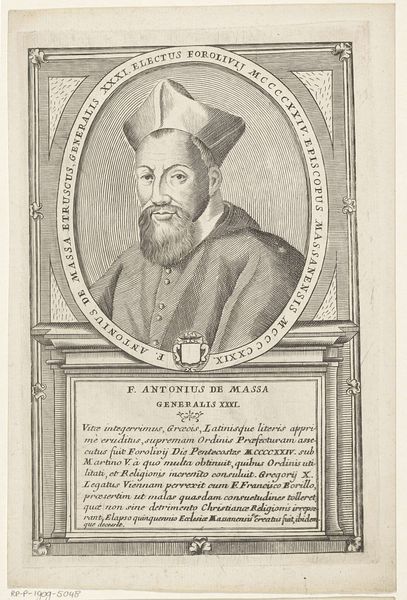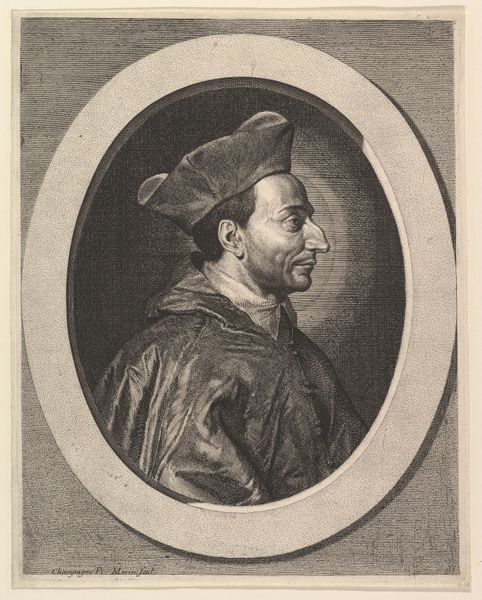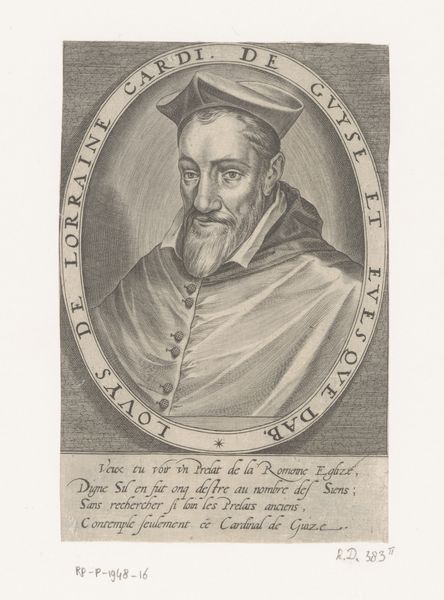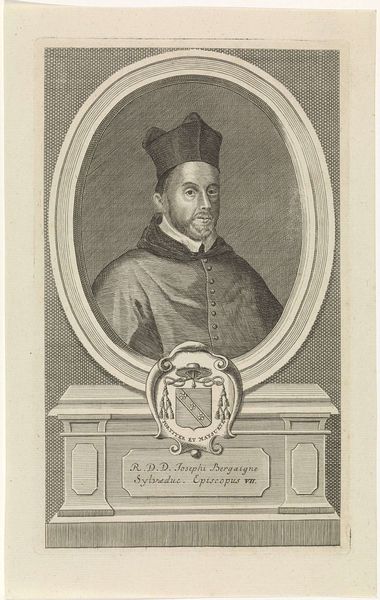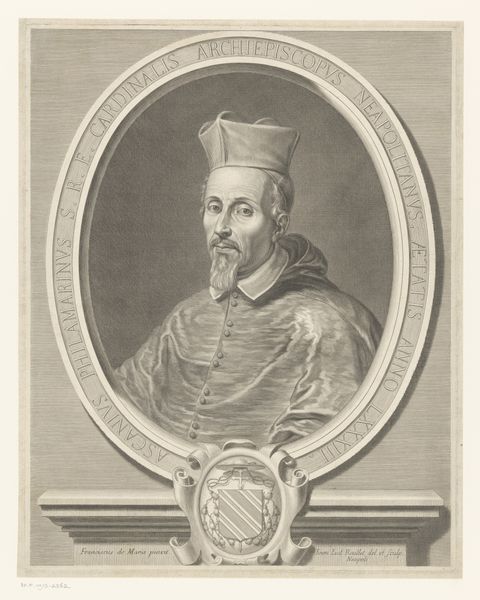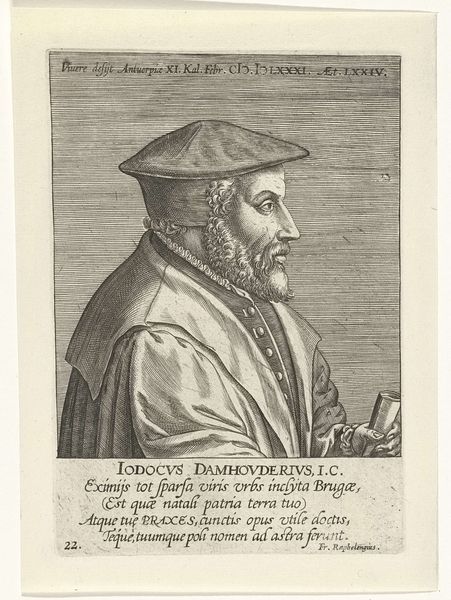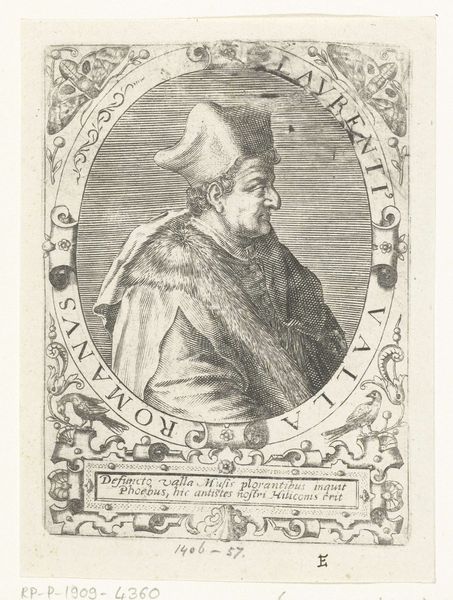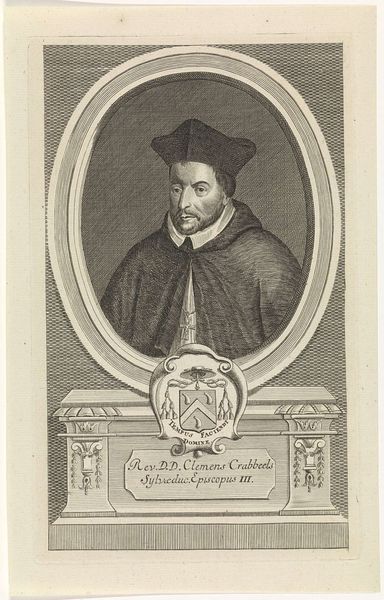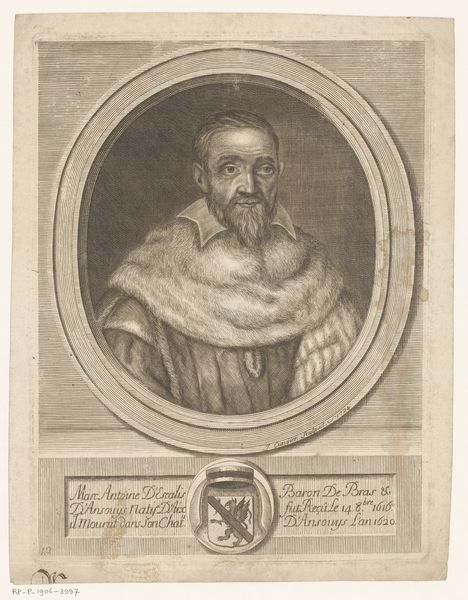
engraving
#
portrait
#
baroque
#
academic-art
#
engraving
Dimensions: height 257 mm, width 180 mm
Copyright: Rijks Museum: Open Domain
Curator: This is "Portret van Cornelius Jansenius," dating roughly between 1660 and 1715, and we have it here at the Rijksmuseum. It’s an engraving. Editor: Immediately, I notice the precision of the lines. The engraver has meticulously rendered the contours of Jansenius’ face, particularly the strong nose and determined jawline. The varying densities of line create subtle gradations of light and shadow. Curator: Indeed. The portrait serves to memorialize Cornelius Jansenius, a prominent figure associated with the University of Leuven and, more controversially, the theological doctrine of Jansenism, which challenged orthodox Catholic views on grace and free will. It reflects the period’s interest in portraying intellectual and religious leaders, solidifying their place in history. Editor: From a formal perspective, the oval frame surrounding the portrait, with the inscribed text, contributes to a sense of formality. It draws the viewer’s eye directly to Jansenius' profile. The contrast between the detailed portrait and the comparatively sparse background isolates him, lending him an air of importance. Curator: The inscription below is a testament to Jansenius: "To live for the Court, to die for his flock. It is of Jansenius the most perfect painting." This hints at the religious and political pressures of the time and the role imagery played in shaping reputations and ideologies. His ideals about the human relationship to god clashed with some popular ideas. Editor: I see how the engraver used hatching to model the drapery of his robes, suggesting volume and depth with only tonal shifts. Despite being a static profile, the texture work and clear contrasts animate his face, as does his pointed gaze toward the upper right, leading my eye and making me wonder at what exactly he gazes. Curator: And such prints, accessible to a broader audience than painted portraits, played a crucial role in disseminating Jansenius' image and legacy, particularly among his followers. It underscores the complex relationship between art, religion, and power during that era. Editor: Looking once more, it feels quite rigid and formal—somewhat cold—a stark contrast to the exuberance we often see in Baroque portraiture. However, perhaps that coolness contributes to the sense of him as someone stern and imposing. Curator: Precisely. These kinds of portraits aimed to convey not just a likeness, but a persona imbued with particular virtues or ideas deemed valuable by specific social or intellectual groups. Editor: Yes, indeed. It’s always remarkable to witness the depth of artistry distilled in something that might first appear simply functional or memorial.
Comments
No comments
Be the first to comment and join the conversation on the ultimate creative platform.

